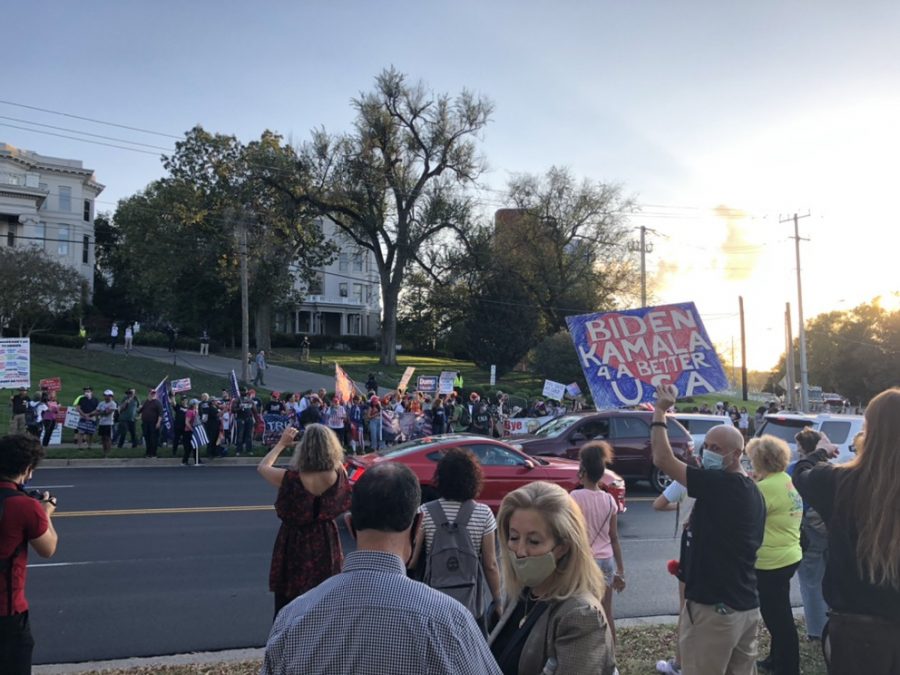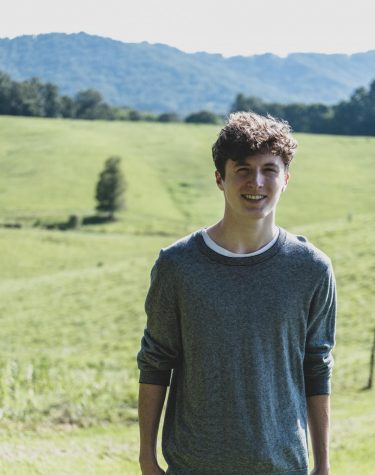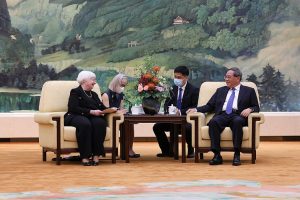An American Tradition: Protesters at the Final Presidential Debate
October 24, 2020
Thursday evening saw several hundred protesters gathered on the sidewalks of Wedgewood Ave, just steps from Belmont University’s campus. Protesters congregated in anticipation of the third and final presidential debate, which took place at the Belmont University Curb Event Center.
Wearing political clothing and garnishing flags, signs, and banners, protesters were enthusiastic and highly energized about the opportunity to spread their message. They represented a broad range of organizations and ideologies taking to the streets in an attempt to support their candidates and raise awareness for issues they care about.
One of these protesters was Becca Dryden, a Belmont University alumni, and organizer for Be Better Belmont. Be Better Belmont works to hold Belmont University accountable for its connection to CoreCivic, the nation’s largest for-profit prison organization. Despite having held panels and other events, Dryden is frustrated by Belmont’s ineffectual response to their movement and hopes that protests of this nature will be able to drive change at Belmont.
“Protesting is a really important tool for us to have our voice heard. Protesting is a chance for us to show how many people support this particular initiative, and support holding Belmont accountable. It’s harder to ignore a large group of people like this.”
Also at the protests was Vanderbilt University professor emeritus, Eric Schechter.
Schechter hoped to raise awareness about the dangers of capitalism, his sign reading “Capitalism Causes Corruption.” To Schechter, the value of protest lies in its ability to build awareness.
“Building awareness is where it all starts. If you get enough people pushing one idea, then the politicians have to listen.” A frequent attendee of political rallies and events around Nashville, Schechter takes every opportunity to share his beliefs: “I am trying to spread my message wherever I can, wherever I think there might be a receptive audience.”
Another demonstrator was Mark Harrington, president and founder of the anti-abortion organization Created Equal.
“We’re here to educate the students of Belmont on the issue of abortion,” he stated. Harrington was joined by several other representatives from Created Equal, who displayed posters depicting abortions on the sidewalks around Wedgewood Ave.
Conversely, many of the demonstrators simply wanted to show support for their presidential candidates.
Gui Zhu Benbow was adamant about sharing her support for president Trump. A Chinese immigrant, Benbow wanted to let people know that she supports the incumbent candidate.
“Trump is the only one who can make America great again,” she said. “I am from China, a country of communism, we don’t have freedom”.
Likewise, Aaron Hinesley travelled from Winston-Salem, North Carolina to ensure that Jo Jorgensen would have support at the protests.
“With this being the last major debate, there has to be a voice for the third party,” Hinesley stated. “I see that a lot of people [at the protests] are on one side or the other, but it’s always good to have all voices there.” Hinesley was one of the few people brandishing Jorgensen campaign signs prior to the debate.
Maxwell Schulman, a Vanderbilt student and member of the Vanderbilt College Democrats, worked with the Biden campaign to turn out supporters ahead of the Belmont debate.
“We were [at the protests] to disprove the conventional wisdom that the talking heads have been pushing: that Biden voters are just tired of Trump, that we’re unenthusiastic about Joe.”
Schulman estimated that several hundred Biden supporters joined him in demonstrating on Wedgewood Ave.
“That’s commitment. That’s passion. And I’m confident that this energy will carry the day on Nov. 3.”
In spite of many clashing viewpoints, the demonstrators present on Thursday evening overwhelmingly agreed that their right to protest is invaluable.
“It’s our first amendment right, it’s an American tradition,” one protester proclaimed. “It’s a beautiful thing,” said another.
“[Protesting] matters because it is from your heart. You want to tell people who you support.”
With the exception of some vitriolic chanting and harsh language, the protests were generally civil and respectful. There were no reports of violence.








